Java 树结构的基础部分(一)
2024-10-12 20:05:54
二叉树
1.1 为什么需要树这种数据结构
1) 数组存储方式的分析
优点:通过下标方式访问元素,速度快。对于有序数组,还可使用二分查找提高检索速度。
缺点:如果要检索具体某个值,或者插入值(按一定顺序)会整体移动,效率较低 [示意图]
画出操作示意图:
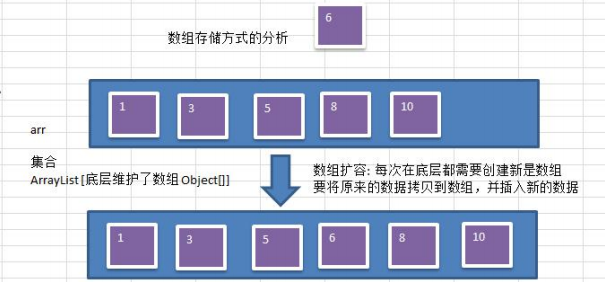
2) 链式存储方式的分析
优点:在一定程度上对数组存储方式有优化(比如:插入一个数值节点,只需要将插入节点,链接到链表中即可,
删除效率也很好)。
缺点:在进行检索时,效率仍然较低,比如(检索某个值,需要从头节点开始遍历) 【示意图】
操作示意图:
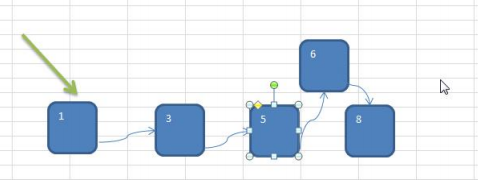
3) 树存储方式的分析
能提高数据存储,读取的效率, 比如利用 二叉排序树(Binary Sort Tree),既可以保证数据的检索速度,同时也
可以保证数据的插入,删除,修改的速度。【示意图,后面详讲】
案例: [7, 3, 10, 1, 5, 9, 12]

1.2 树示意图
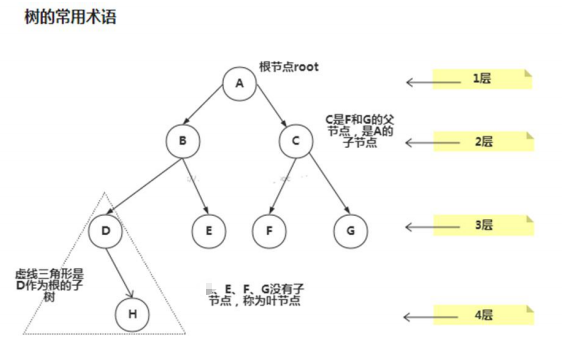
树的常用术语(结合示意图理解):
1) 节点
2) 根节点
3) 父节点
4) 子节点
5) 叶子节点 (没有子节点的节点)
6) 节点的权(节点值)
7) 路径(从 root 节点找到该节点的路线)
8) 层
9) 子树
10) 树的高度(最大层数)
11) 森林 :多颗子树构成森林
1.3 二叉树的概念
1) 树有很多种,每个节点最多只能有两个子节点的一种形式称为二叉树。
2) 二叉树的子节点分为左节点和右节点
3) 示意图
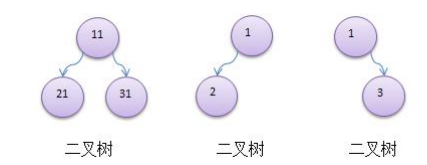
4) 如果该二叉树的所有叶子节点都在最后一层,并且结点总数= 2^n -1 , n 为层数,则我们称为满二叉树。
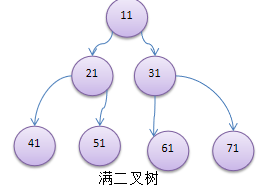
5) 如果该二叉树的所有叶子节点都在最后一层或者倒数第二层,而且最后一层的叶子节点在左边连续,倒数第二
层的叶子节点在右边连续,我们称为完全二叉树
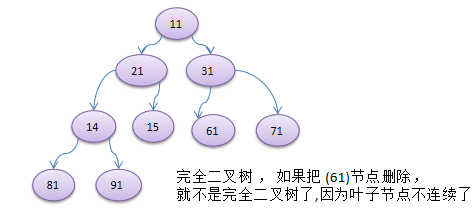
1.4 二叉树遍历的说明
使用前序,中序和后序对下面的二叉树进行遍历.
1) 前序遍历: 先输出父节点,再遍历左子树和右子树
2) 中序遍历: 先遍历左子树,再输出父节点,再遍历右子树
3) 后序遍历: 先遍历左子树,再遍历右子树,最后输出父节点
4) 小结: 看输出父节点的顺序,就确定是前序,中序还是后序
1.5 二叉树遍历应用实例(前序,中序,后序)
应用实例的说明和思路
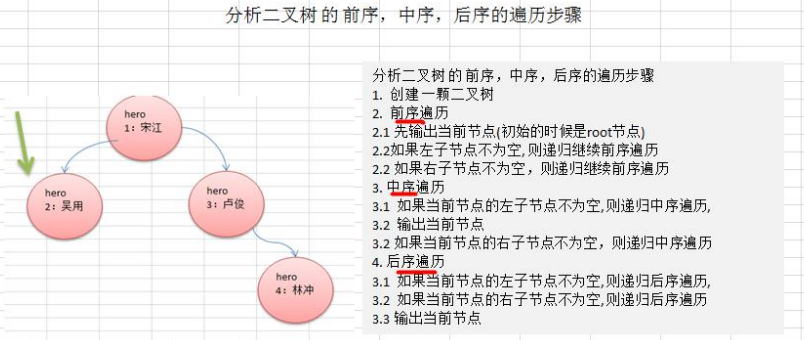
代码实现
在最后面
1.6 二叉树-查找指定节点
要求
1) 请编写前序查找,中序查找和后序查找的方法。
2) 并分别使用三种查找方式,查找 heroNO = 5 的节点
3) 并分析各种查找方式,分别比较了多少次
4) 思路分析图解

5) 代码实现
在最后面
1.7 二叉树-删除节点
要求
1) 如果删除的节点是叶子节点,则删除该节点
2) 如果删除的节点是非叶子节点,则删除该子树
3) 测试,删除掉 5 号叶子节点 和 3 号子树.
4) 完成删除思路分析

5) 代码实现
package com.lin.tree_0308;
public class BinaryTreeDemo {
public static void main(String[] args) {
BinaryTree binaryTree = new BinaryTree();
HeroNode heroNode1 = new HeroNode(1, "伍六七");
HeroNode heroNode2 = new HeroNode(2, "梅花十一");
HeroNode heroNode3 = new HeroNode(3, "梅花十三");
HeroNode heroNode4 = new HeroNode(4, "江主任");
HeroNode heroNode5 = new HeroNode(5, "希义");
heroNode1.setLeft(heroNode2);
heroNode1.setRight(heroNode3);
heroNode3.setRight(heroNode4);
heroNode3.setLeft(heroNode5);
binaryTree.setRoot(heroNode1);
// System.out.println("前序遍历:");
// binaryTree.preOrder();
// System.out.println("中序遍历:");
// binaryTree.infixOrder();
//
// System.out.println("后序遍历");
// binaryTree.postOrder();
// System.out.println("前序查找:");
// HeroNode preOrderSearch = binaryTree.preOrderSearch(5);
// if(preOrderSearch != null) {
// System.out.println(preOrderSearch);
// } else {
// System.out.println("没有找到");
// }
// System.out.println("中序查找:");
// HeroNode infixOrderSearch = binaryTree.infixOrderSearch(5);
// if(infixOrderSearch != null) {
// System.out.println(infixOrderSearch);
// } else {
// System.out.println("没有找到");
// }
//
// System.out.println("后序查找:");
// HeroNode postOrderSearch = binaryTree.postOrderSearch(5);
// if(postOrderSearch != null) {
// System.out.println(postOrderSearch);
// } else {
// System.out.println("没有找到");
// }
System.out.println("删除前");
binaryTree.preOrder();
binaryTree.delNode(2);
System.out.println("删除后");
binaryTree.preOrder();
}
}
class BinaryTree{
private HeroNode root;
public void setRoot(HeroNode root) {
this.root = root;
}
// 删除节点
public void delNode(int no) {
if (root != null) {
// 如果只有一个root
if (root.getNo() == no) {
root = null;
} else {
root.delNode(no);
}
} else {
System.out.println("空树!");
}
}
// 前序遍历
public void preOrder() {
if(this.root != null) {
this.root.preOrder();
} else {
System.out.println("二叉树为空!");
}
}
// 中序遍历
public void infixOrder() {
if(this.root != null) {
this.root.infixOrder();
} else {
System.out.println("二叉树为空!");
}
}
// 后序遍历
public void postOrder() {
if(this.root != null) {
this.root.postOrder();
} else {
System.out.println("二叉树为空!");
}
}
// 前序查找
public HeroNode preOrderSearch(int no) {
if(root != null) {
return root.preOrderSearch(no);
} else {
return null;
}
}
// 中序查找
public HeroNode infixOrderSearch(int no) {
if (root != null) {
return root.infixOrderSearch(no);
} else {
return null;
}
}
// 后序查找
public HeroNode postOrderSearch(int no) {
if (root != null) {
return root.postOrderSearch(no);
} else {
return null;
}
}
}
class HeroNode{
private String name;
private int no;
private HeroNode left;
private HeroNode right;
public HeroNode(int no, String name) {
this.no = no;
this.name = name;
}
public String getName() {
return name;
}
public void setName(String name) {
this.name = name;
}
public int getNo() {
return no;
}
public void setNo(int no) {
this.no = no;
}
public HeroNode getLeft() {
return left;
}
public void setLeft(HeroNode left) {
this.left = left;
}
public HeroNode getRight() {
return right;
}
public void setRight(HeroNode right) {
this.right = right;
}
@Override
public String toString() {
return "HeroNode [name=" + name + ", no=" + no + "]";
}
// 前序遍历
public void preOrder() {
System.out.println(this); // 输出父节点
if(this.left != null) {
this.left.preOrder();
}
if(this.right != null) {
this.right.preOrder();
}
}
// 中序遍历
public void infixOrder() {
if (this.left != null) {
this.left.infixOrder();
}
System.out.println(this); // 输出父节点
if (this.right != null) {
this.right.infixOrder();
}
}
// 前序遍历
public void postOrder() {
if (this.left != null) {
this.left.postOrder();
}
if (this.right != null) {
this.right.postOrder();
}
System.out.println(this); // 输出父节点
}
// 前序查找
public HeroNode preOrderSearch(int no) {
System.out.println("1");
// 比较当前节点是不是
if(this.no == no) {
return this;
}
// 1 判断当前节点的左节点是否为空,如果不为空,则递归前序查找
// 2 如果左递归前序查找,找到节点,则返回
HeroNode resNode = null;
if(this.left != null) {
resNode = this.left.preOrderSearch(no);
}
if(resNode != null) {// 说明左子树找到了
return resNode;
}
// 1 左递归如果没有找到,则继续判断
// 2 当前节点的右节点是否为空,如果不为空,则继续向右递归前序查找
if(this.right != null) {
resNode = this.right.preOrderSearch(no);
}
// 这时候不管有没有找到都要返回resNode
return resNode;
}
// 中序查找
public HeroNode infixOrderSearch(int no) {
HeroNode resNode = null;
if(this.left != null) {
resNode = this.left.infixOrderSearch(no);
}
if(resNode != null) {
return resNode;
}
System.out.println("1");
if(this.no == no) {
return this;
}
if(this.right != null) {
resNode = this.right.infixOrderSearch(no);
}
return resNode;
}
// 后序查找
public HeroNode postOrderSearch(int no) {
HeroNode resNode = null;
if(this.left != null) {
resNode = this.left.postOrderSearch(no);
}
if(resNode != null) {
return resNode;
}
if(this.right != null) {
resNode = this.right.postOrderSearch(no);
}
if(resNode != null) {
return resNode;
}
System.out.println("1");
if(this.no == no) {
return this;
}
// 如果都没有找到
return resNode;
}
/**
*
* @Description:1 因为我们的二叉树是单向,所以我们是判断当前节点的子节点是否需要删除节点,而不是直接去判断当前节点是否需要删除节点。<br>
* 2 如果当前节点的左子节点不为空,并且左子节点就是要删除节点,就将this.left = null;并且就返回(结束递归删除) <br>
* 3 如果当前节点的右子节点不为空,并且右子节点就是要删除节点,就将this.right = null;并且就返回(结束递归删除) <br>
* 4 如果第2和第3都没有删除节点,那么我们就需要向左子树进行递归删除<br>
* 5 如果第4补也没有删除节点,则向右子树进行递归删除<br>
* @author LinZM
* @date 2021-3-8 15:17:32
* @version V1.8
*/
public void delNode(int no) {
if(this.left != null && this.left.no == no) {
this.left = null;
return;
}
if(this.right != null && this.right.no == no) {
this.right = null;
return;
}
if(this.left != null) {
this.left.delNode(no);
}
if(this.right != null) {
this.right.delNode(no);
}
}
}
仅供参考,有错误还请指出!
有什么想法,评论区留言,互相指教指教。
觉得不错的可以点一下右边的推荐哟
最新文章
- 【.NET深呼吸】动态类型(扩充篇)
- 从DOM操作看Vue&React的前端组件化,顺带补齐React的demo
- C++实现DNS域名解析
- tomcat管理端的页面安全措施
- LeetCode:Best Time to Buy and Sell Stock I II III
- C#引用COM对象,报错:《类型 *** 未定义构造函数, 无法嵌入互操作类型 *** 。请改用适用的接口》的解决办法。
- [转载]Matrix类的使用
- 项目SVN的IP地址发生变化时修改SVN为新的IP地址
- 【C#设计模式——创建型模式】工场方法模式
- (四)左右ng-app自己主动bootstrap相框
- 系统重启后,mr程序不生成当前时间段的MRx文件问题
- 嵌入式Linux开发之uboot启动Linux整体流程分析
- redis在linux云服务器上完整的搭建步骤
- Flask框架(二)
- python中的replace()方法的使用
- K8s核心概念详解
- POJ 3662 Telephone Lines (二分 + 最短路)
- java基本数据类型与封装类型详解(int和Integer区别)
- 安装和配置Apache服务器(上)
- JavaScript设计模式-----模板方法模式
热门文章
- Long Long Message POJ - 2774 后缀数组
- JavaScript——原型
- Educational Codeforces Round 94 (Rated for Div. 2) A. String Similarity (构造水题)
- MDK5生成BIn文件的方法
- Ant-design-vue—— 表单输入框输入很卡问题
- npm publish & 403 Forbidden
- WoT
- 图解 H5 与 WebView 数据通信原理
- Regular Expression & rgb2hex
- Scratch & Flappy Turtle & Flappy Bird & Game